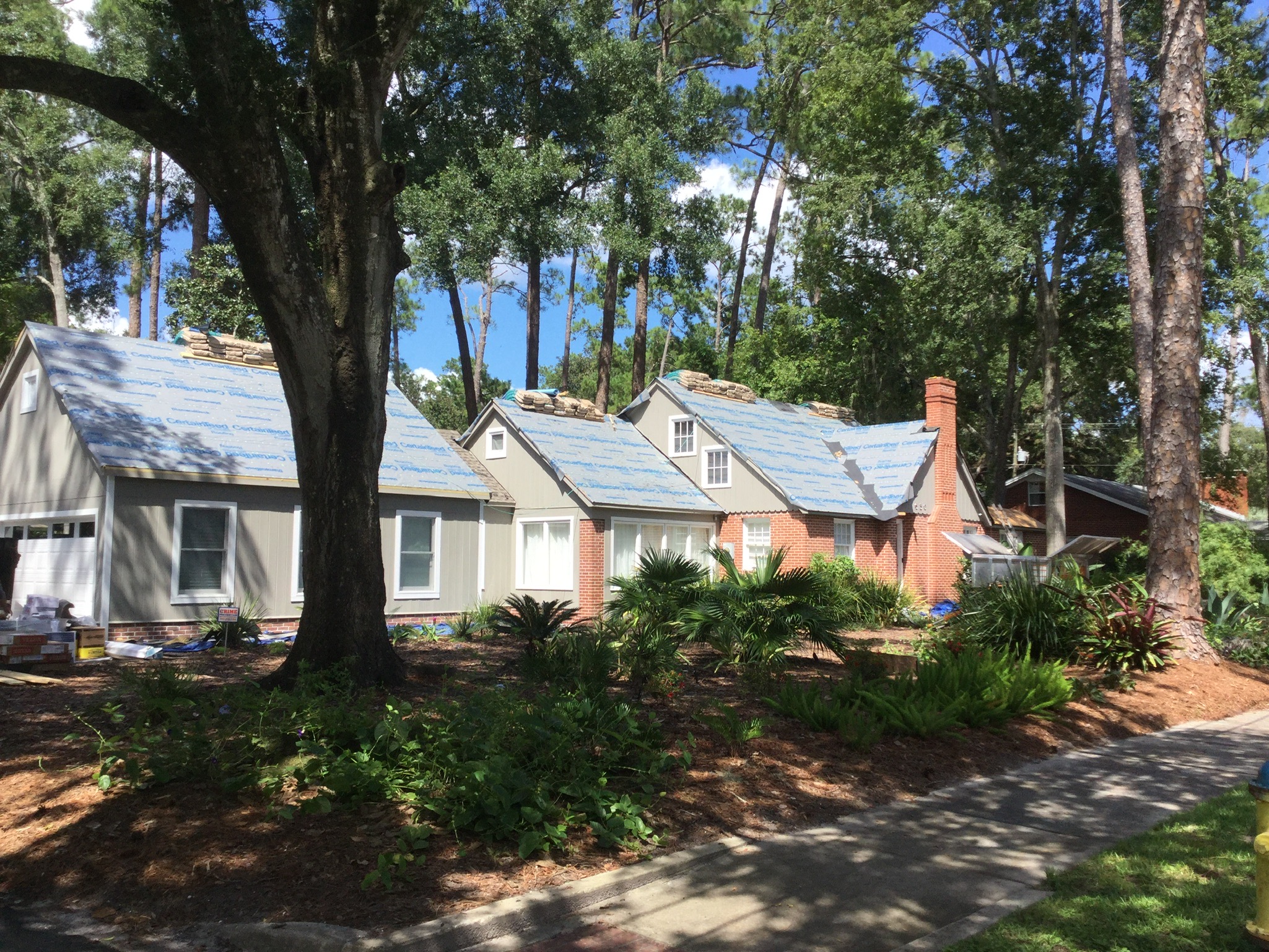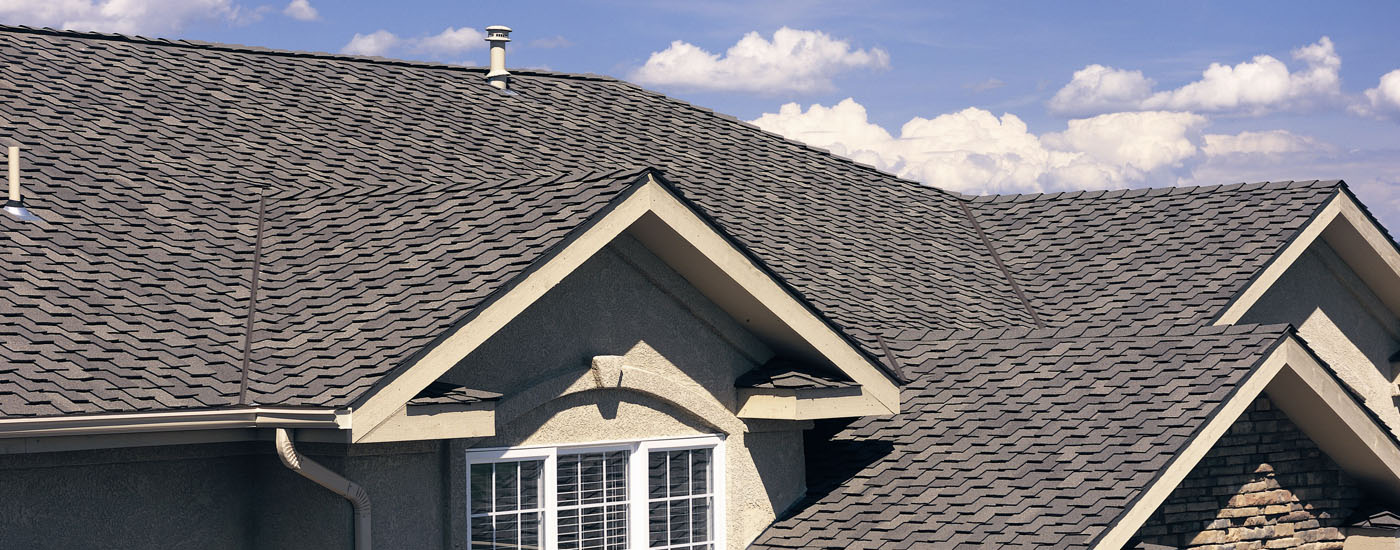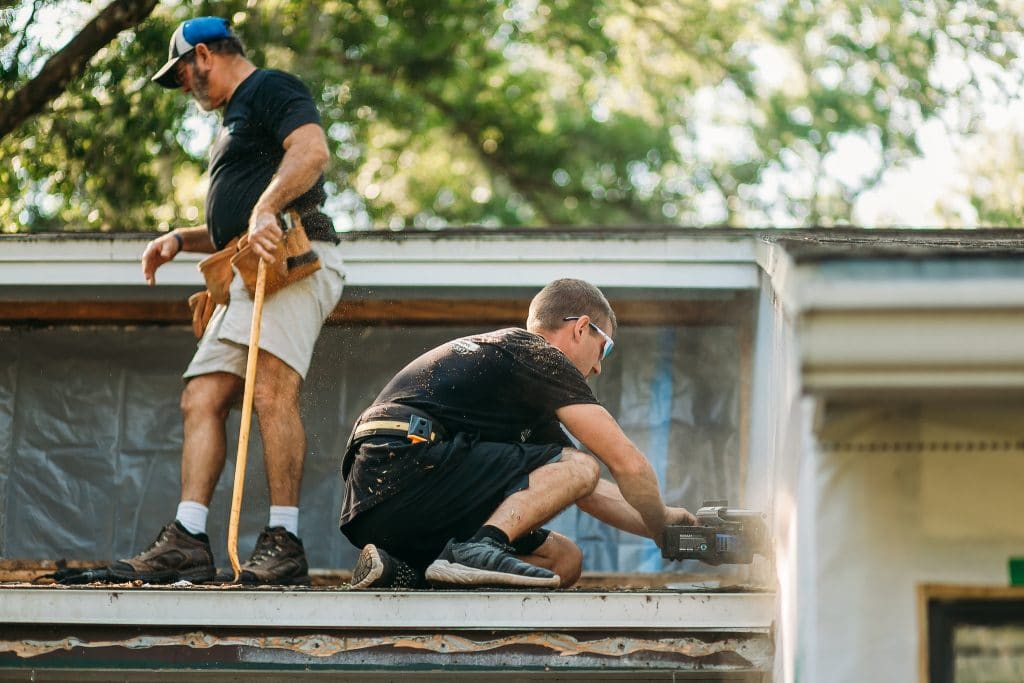
Your roof is designed to protect both your home and your family, and all the components that make up your roof are important to ensure its safety and stability. A specific part of your roof, namely, the synthetic roofing underlayment, is crucial in water damage prevention.
What is Synthetic Roofing Underlayment?
Before we can dive into what synthetic roofing underlayment is, you’ll need to first understand why it’s installed on your roof. Underlayment, in general, is crucial to your roof’s design. Its primary purpose is moisture protection, which is absolutely necessary for any Florida homeowner.
Underlayment is installed beneath your shingles, serving as a watertight layer to protect the roof deck from water damage and moisture. If the roof deck is exposed to the elements, it threatens the entire structure of your roof.
Synthetic vs. Felt Paper
There are a few different materials used for underlayment, but the most popular types are synthetic and felt paper. Felt paper, made from asphalt-saturated felt, has been around for a long time and is still a common form of underlayment.
Synthetic underlayment, made from a fiberglass mixture, is stronger and lighter compared to felt paper underlayment. While it is more expensive than felt paper, synthetic underlayment retains less heat due to its lighter color (felt paper is most commonly black). Synthetic roofing underlayment is so effective that it can even be used as a short-term roof cover.
Importance of Underlayment
Underlayment is critical to keeping moisture out of your home, especially during our intense storm seasons. Without a reliable or properly installed underlayment, you will experience a whole host of roofing problems.
If shingles come off during intense weather, the only thing between your roof deck and inclement weather is your underlayment. This extra layer of protection ensures that the structure of your roof is not threatened and reduces the risk of interior water damage.
Installing Sythetic Roofing Underlayment
Simply having underlayment is not enough. For it to serve your roof well, underlayment must be installed correctly. Proper underlayment installation occurs before any shingles are added to your roof. At McFall Roofing, we ensure that the roof is completely clear from debris before adding the underlayment. We wouldn’t want debris to puncture the underlayment and threaten the security of your roof!
Synthetic underlayment is installed in two sections. The first section is a water protection layer that goes around the roof’s perimeter for a tight seal. This is also added to areas that receive the most water, like the valleys of your roof. The purpose of this first layer is to correctly channel water for proper drainage so that it doesn’t sit on top of your roof.
The second layer is the tear and water-resistant layer of underlayment that will be installed in the remaining areas of your roof. Another bonus of using synthetic underlayment is that it has great traction, so your roofing contractors are better protected as they work on your roof.
Gainesville Roofing with McFall Residential Roofing
In all kinds of weather, your roof should be engineered to withstand the elements while also keeping you and your family safe. Underlayment is crucial to your roof and helps reduce the risk of water damage. Stay protected with a quality roof that is built to last!
Contact McFall Residential Roofing in Gainesville, FL for all of your roofing needs. From installation to repair, we do it all!






